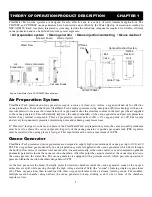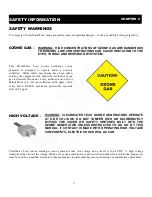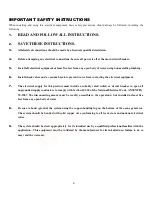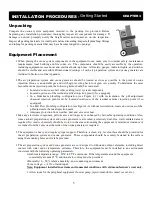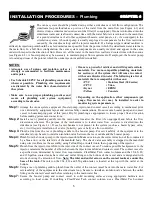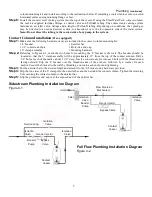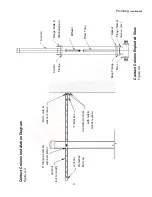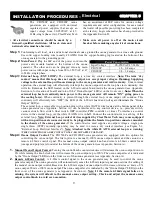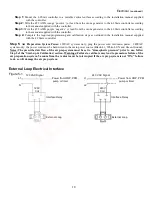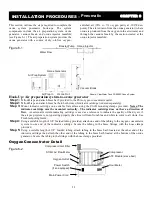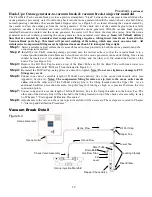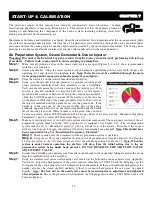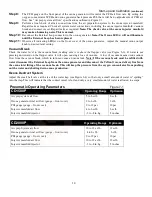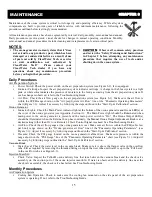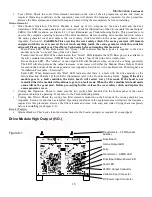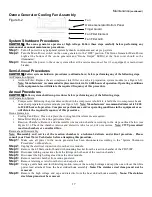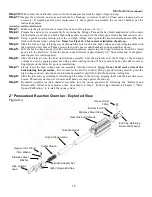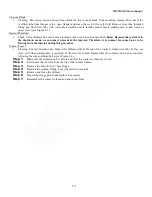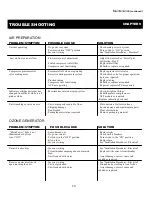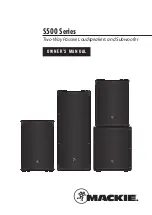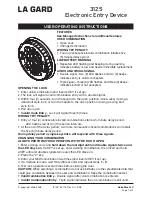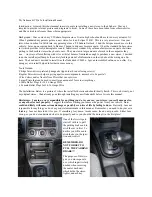
5
INSTALLATION PROCEDURES -
Getting Started
CHAPTER 3
Unpacking
Compare the ozone system equipment received to the packing list provided. Before
beginning any installation procedures, thoroughly inspect all components for damage. If
damage is noticed, promptly notify the freight carrier and request an on-site inspection.
Inspect all packing materials for small parts before discarding. Inspect all plumbing, fittings
and tubing for packing material that may have become lodged in openings.
Equipment Placement
•
When placing the ozone system components in the equipment room, make sure to consider safety, maintenance
requirements, local building and fire codes, etc. The components should be easily accessible by the operators,
including equipment access doors and electrical hook-up boxes. All meters, gauges, indicator lights, and switches
should be visible and accessible. Dimensional drawings of each air preparation system and ozone generator are
included in Section A of the Appendix.
•
The air preparation system and ozone generator should be located as close as possible to the point of ozone
injection. Ozone is an unstable gas and will begin reverting back to oxygen very quickly. To determine the most
favorable ozone injection point, the following items should be considered:
• Located
downstream
of all other existing water system components.
• Located
upstream
of the residual sanitizer injection point (if so equipped).
• In a Sidestream plumbing configuration (see Figure 4-1) with recirculation, the pH adjustment
chemical injection point must be located
downstream
of the residual sanitizer injection point (if so
equipped).
• In a Full Flow plumbing configuration (see Figure 4-2) without recirculation, locate
downstream
of the
pH adjustment chemical injection point.
• Adequate protection from weather, dust and excessive heat.
•
Like any electronic component, performance and longevity is enhanced by favorable operating conditions. Also,
since each air preparation system and ozone generator is air-cooled, a relatively dust-free, well-ventilated area is
required. No caustic chemicals should be stored in the area surrounding the equipment. A minimum clearance of
six inches from the vents on either side of the ozone generator is required.
•
The equipment is heavy and requires proper support. Therefore, a clean, dry, level surface should be provided for
the air preparation system and ozone generator. These components should be securely fastened to the surface
using the mounting holes and/or tabs provided.
•
The air preparation system and ozone generator are
not
designed to withstand outdoor elements, including direct
contact with water and/or temperature extremes. Therefore, the equipment must be installed in an environment
consistent with the following operating parameters:
• Ambient temperature range: 20°F to 95°F continuous. If the temperature around the equipment
consistently exceeds 95°F, additional air-cooling must be provided.
• Humidity: 0 – 90% relative humidity, non-condensing environment
• Line voltage: +/-10% of rated input
Note: Equipment installed in extreme environmental conditions will void manufacturer's warranty.
•
Allow room for the peripheral equipment (booster pump, injector manifold, contact vessel, etc.).


